
Another pretty much forgotten optical-audio system.
Oskar Czeija (1887-1958) developed the Selenophone in Austria, from the early to mid 1930s. The first mention found in the press so far is Wireless World for 4th of February 1931.
Standard 35mm cinema film was used, cut so as to be only 7mm wide and carrying just the soundtrack and (possibly- not confirmed) one set of sprocket holes. An oscillograph recorded audio on the sound-track; this was developed and then printed onto as many lengths of secondary nitrate film stock as required, by the usual photographic processes. The system was originally intended for radio broadcasting in Austria, but its most famous application was
recording five 1937 Salzburg Festival operas conducted by Toscanini. The Toscanini performances were his last fully-staged complete opera performances anywhere in the world. The operas were Die Meistersinger, Falstaff, and Die Zauberflote with
Toscanini, and Don Giovanni and Le Nozze di Figaro with Bruno Walter, another of the era's great conductors. There was a sixth opera broadcast that season- Fidelio, conducted by Toscanini- but no copy appears to survive.
The advantages of the Selenophone process over gramophone discs were:
- A recording could be much longer (35 minutes) than for a gramophone disc.
- Many prints could be made from a negative without any loss in sound quality.
- Repeated playback did not cause any loss of sound quality.
- Editing was possible just as with normal film stock.
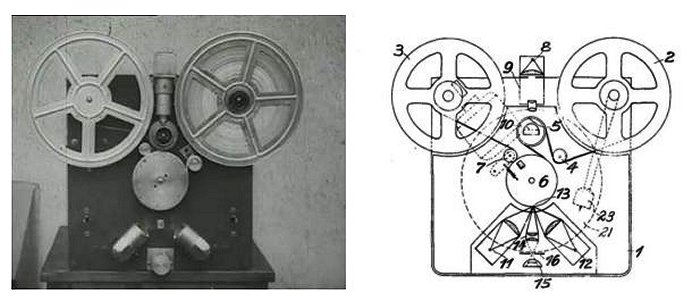 |
| Left: The Selenophone: 1930s
The film and tape velocity was about 50 cm/sec, and a 305 metre (1000 feet) tape gave about 35 minutes of uninterrupted audio. This far exceeded the playing time of the Photoliptophone (4 minutes) and avoided the tape-reversals of the Talking Paper system.
The picture on the right looks as though it comes from a US patent.
|
Playback was by scanning the tape with a beam of light, which was directed onto a selenium cell, which converted the light to an audio voltage. The film passed through the Selenophone at a speed of 20 to 25 inches per second.
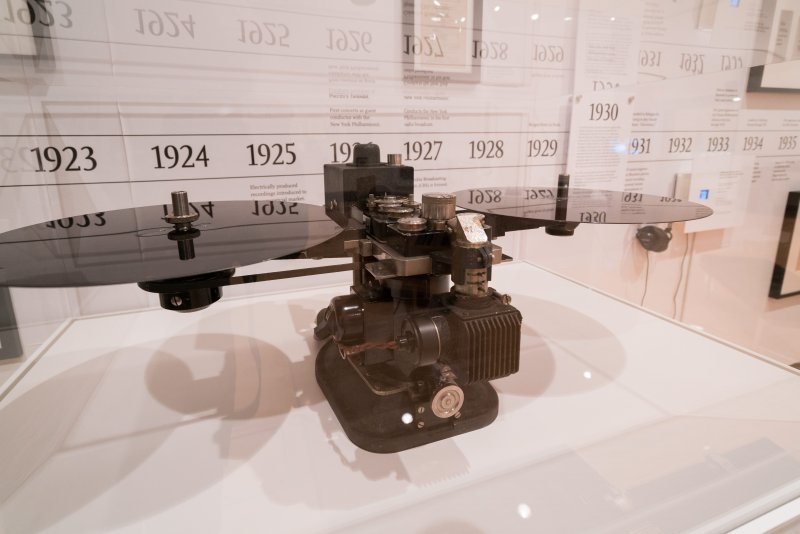 |
| Left: Horizontal format Selenophone
The driven take-up spool is on the left.
This is believed to be the only operational Selenophone in the world. It was based on one of two original machines exported to the USA.
|
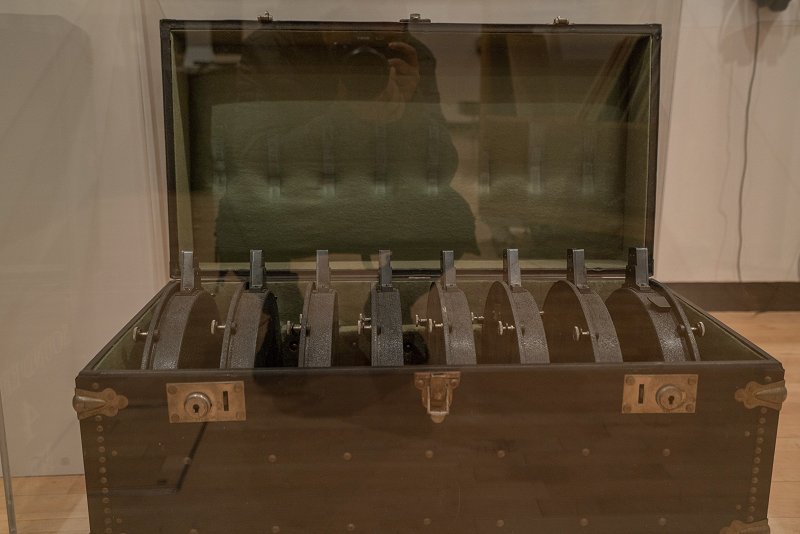 |
| Left: Canisters for storing Selenophone film
it is not at present clear if these are light-tight containers for the original film, or storage for the printed stock.
The exhibit is in a museum somewhere.
|
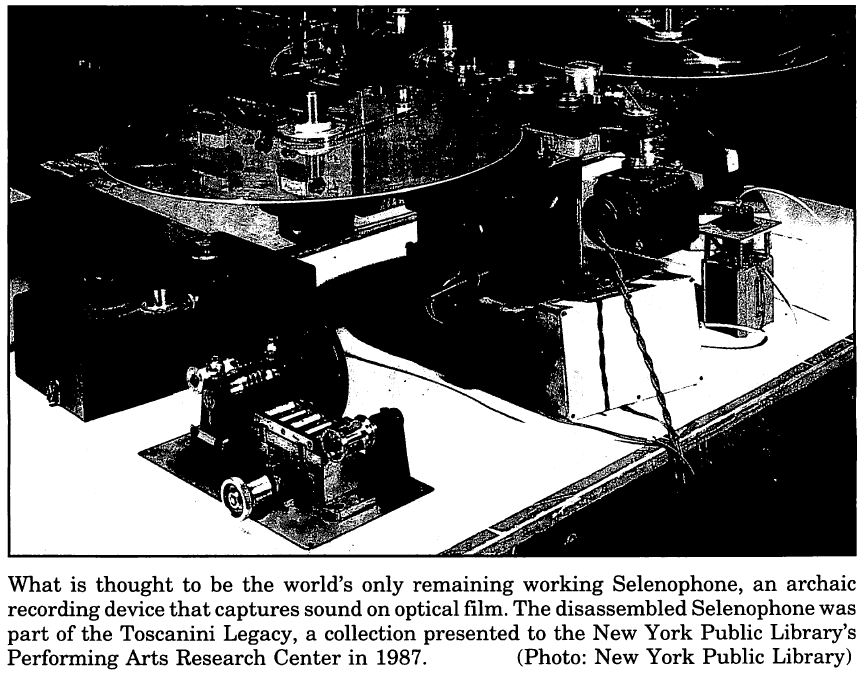 |
| Left: Selenophone
This believed to be a picture of one of the original Selenophones, based on the antique look of the nearby objects.
|
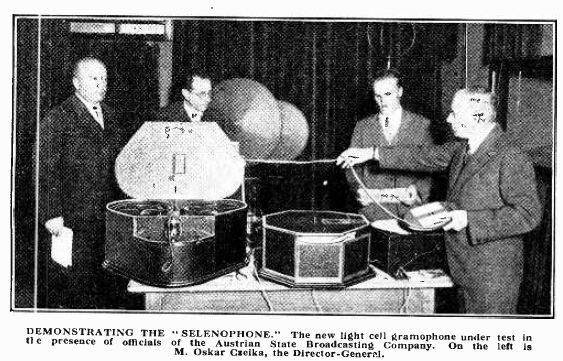 |
| Left: Selenophone demonstration: 1931
An early demonstration of the Selenophone.
Source: Wireless World for 4th Feb 1931
|
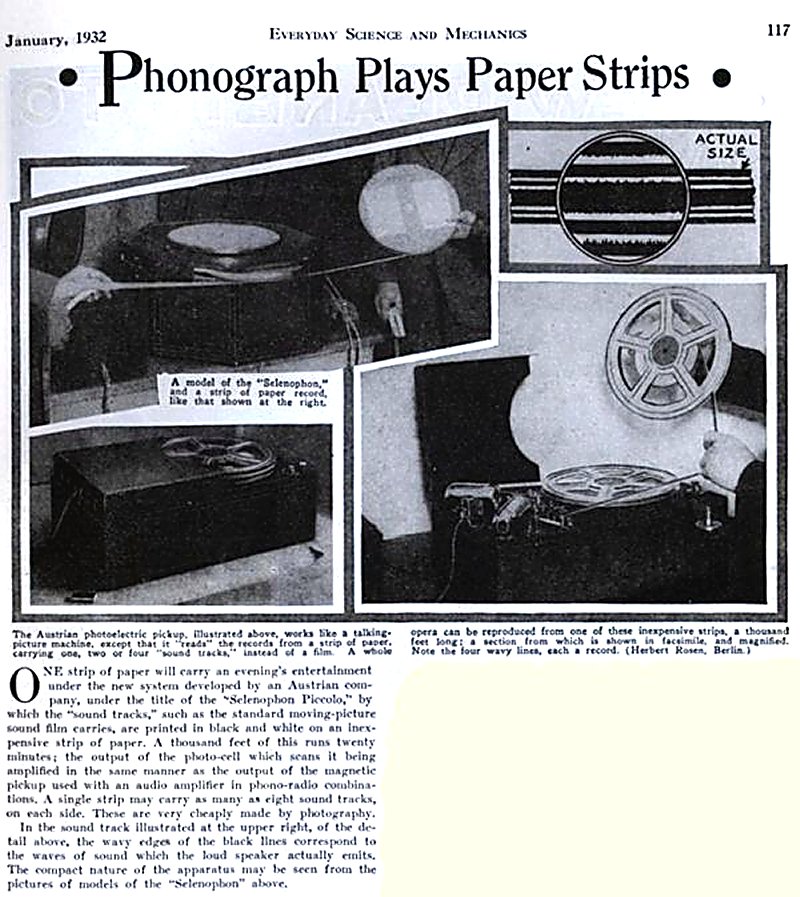 |
| Left: Selenophone description: 1932
An early description of the Selenophone, which confusingly claims that it uses paper tape rather than film. This is the only mention of paper tape found so far. It would presumably be possible to copy a film tape into a paper tape, but it is not clear if the means of readout (transmitted or reflected light?) would be the same.
This version appears to have one tape reel mounted on top of the other, presumably to make the apparatus more compact. Note that this version is called the Selenophon Piccolo. (small)
The author has decided to call it the Selenophon without the final e.
Source: Everyday Science & Mechanics for Jan 1932
|
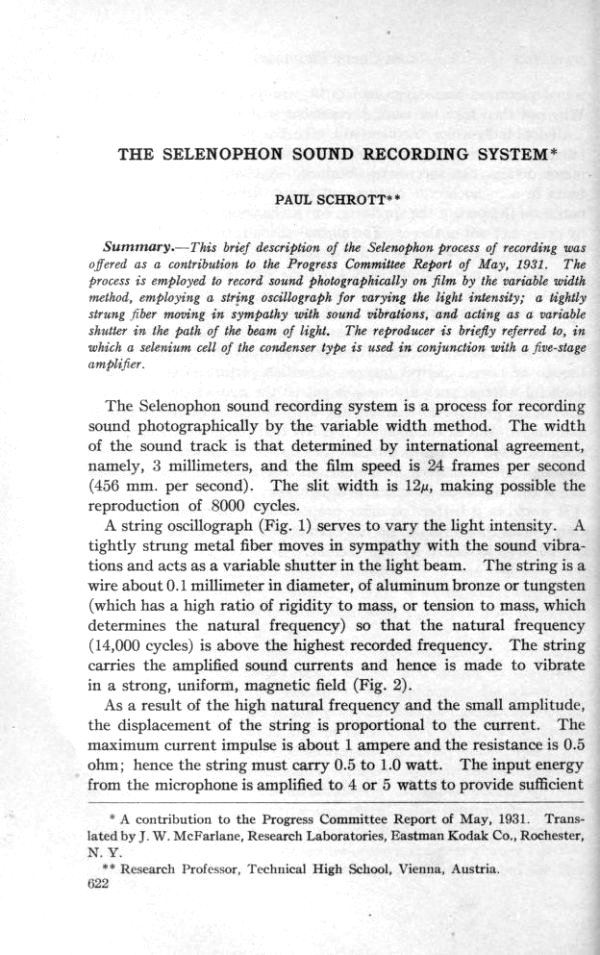 |
| Left: Selenophone description Page 1: 1931
This paper concentrates mostly on the recording part of the process. Again it is called the Selenophon with no e.
It is not clear why putting 1 Watt into a wire should require a 4 to 5 Watt amplifier.
The Progress Committee refers to an Austrian organisation. Note the document had to be translated.
Dr Paul Schrott was a privatdozent (external lecturer) at the Vienna Technical High School. He was the author of Practical Optics: The Laws of Lenses and Their Use Paperback – Illustrated, 1 Jan. 1930, and Guide for Cinema Operators and Cinema Owners (paperback)
Source: Progress Committee Report for May 1931
|
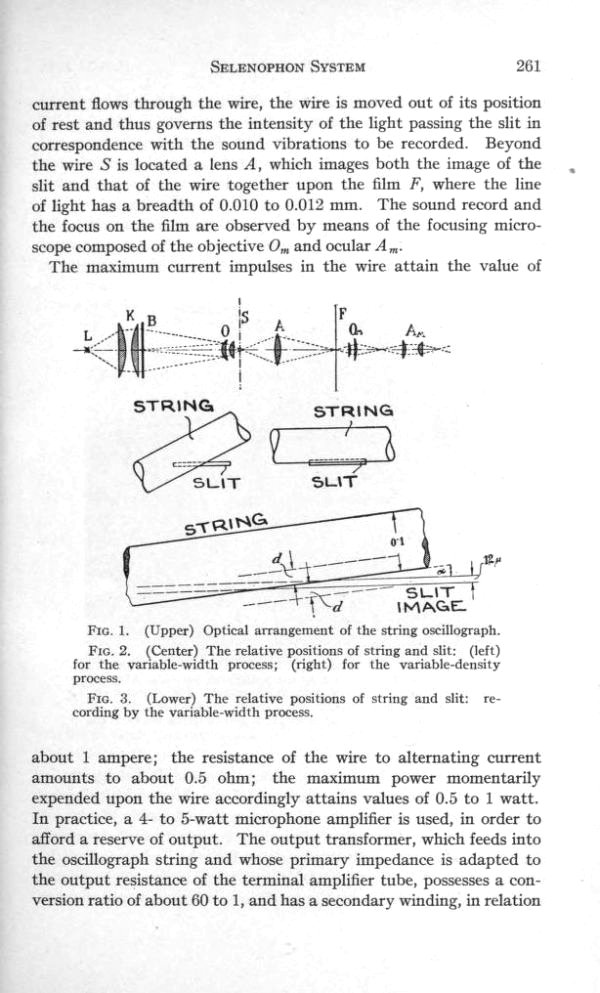 |
| Left: Selenophone description Page 2: 1931
Details of the recording system.
Source: Progress Committee Report for May 1931
|
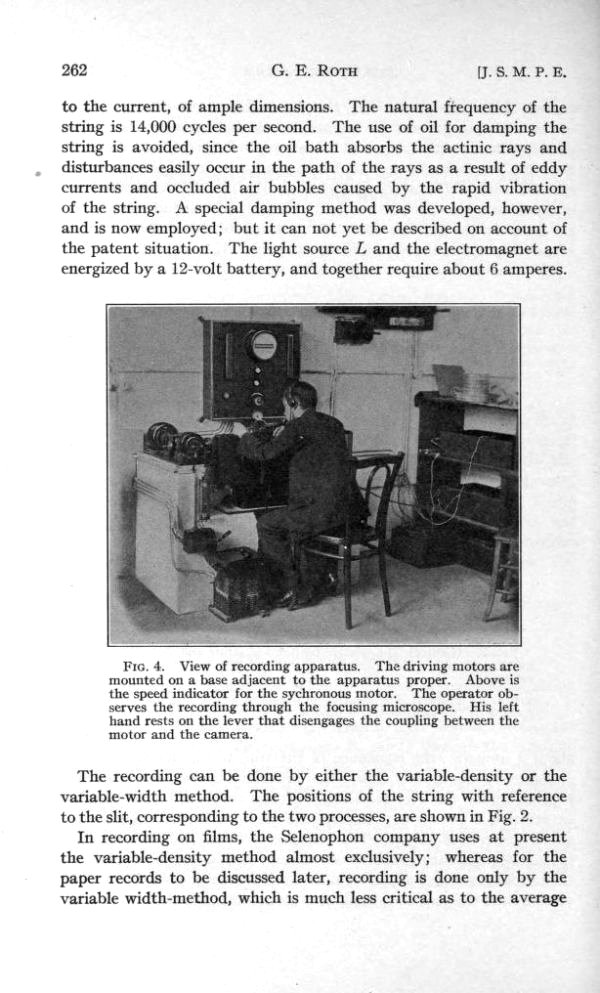 |
| Left: Selenophone description: 1931
Progress Committee on the Selenophone.
Here at the bottom of the page there is another mention of a paper-tape version of the selenophone.
Source: Progress Committee Report for May 1931
|
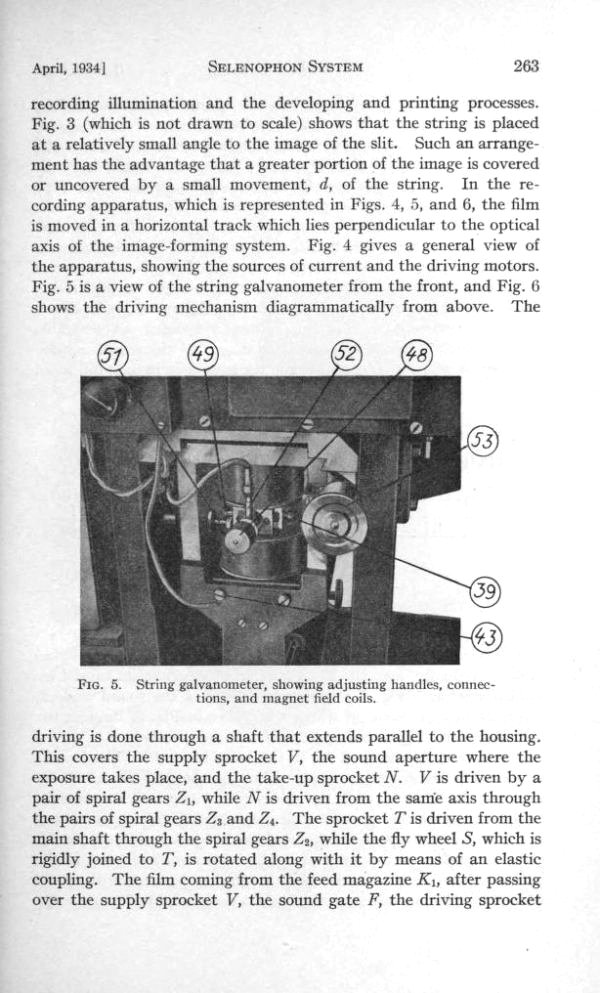 |
| Left: Selenophone description: 1931
Progress Committee on the Selenophone.
Source: Progress Committee Report for May 1931
|
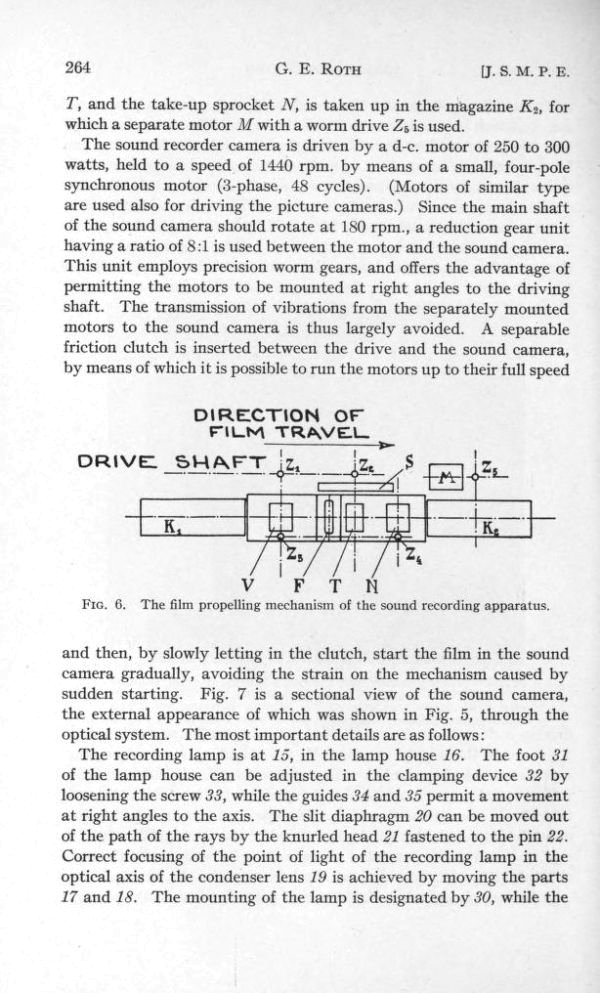 |
| Left: Selenophone description: 1931
Progress Committee on the Selenophone.
Source: Progress Committee Report for May 1931
|
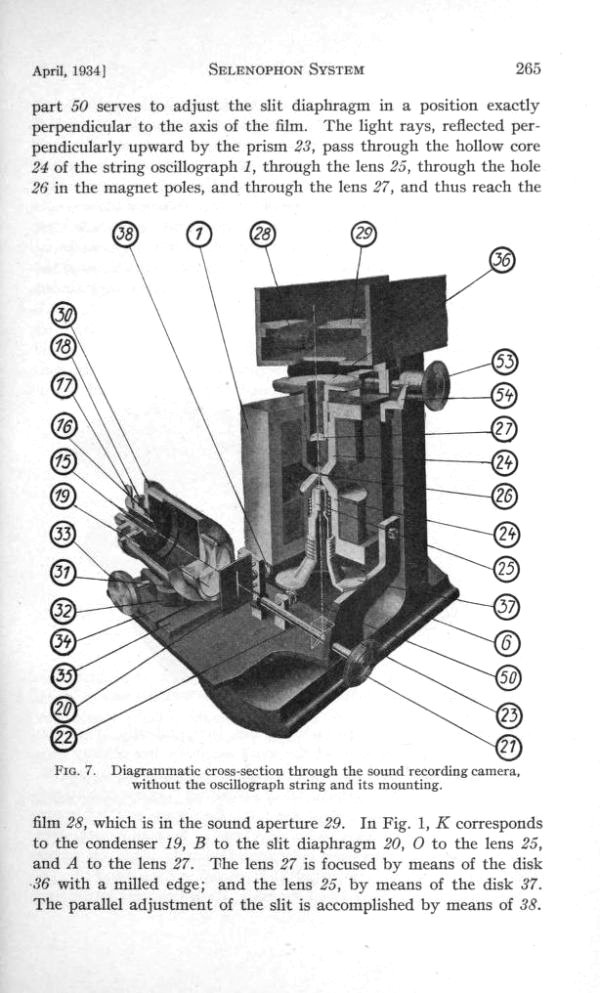 |
| Left: Selenophone description: 1931
Progress Committee on the Selenophone.
Source: Progress Committee Report for May 1931
|
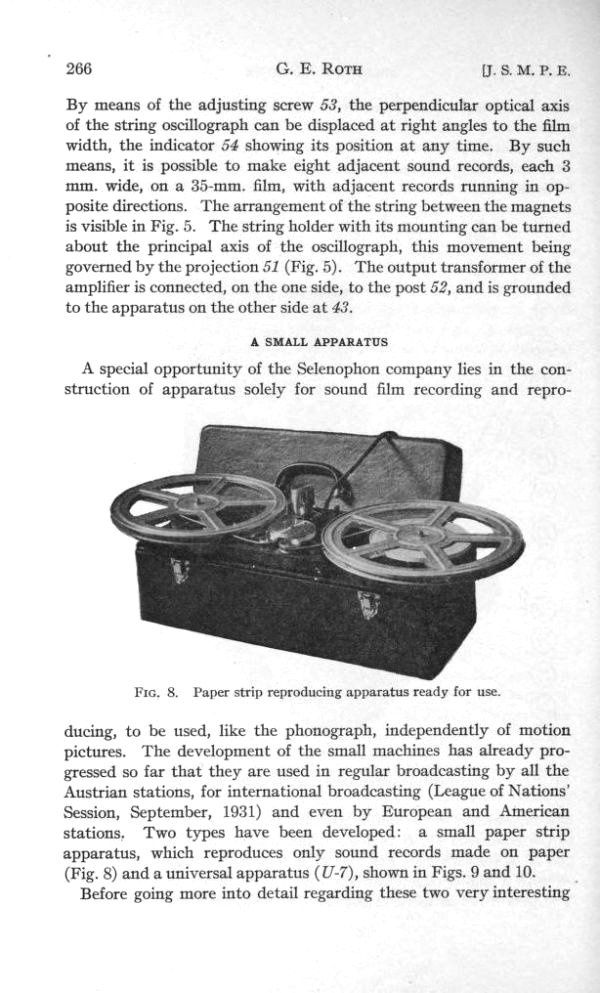 |
| Left: Selenophone description: 1931
This is a reproducing machine that works only with recordings on paper tape.
Progress Committee on the Selenophone.
Source: Progress Committee Report for May 1931
|





















